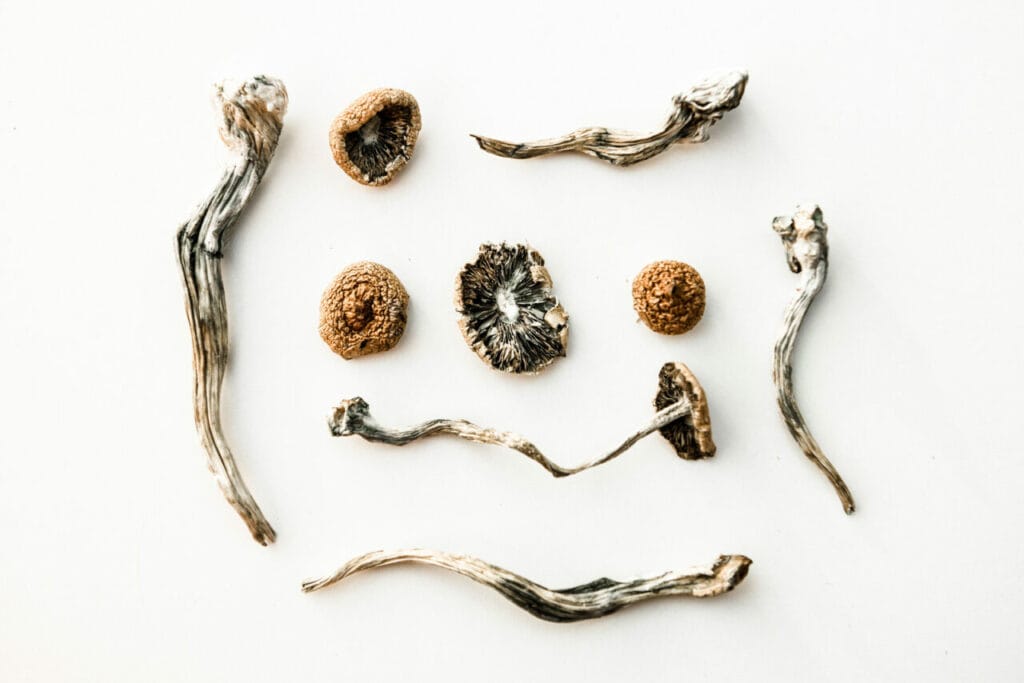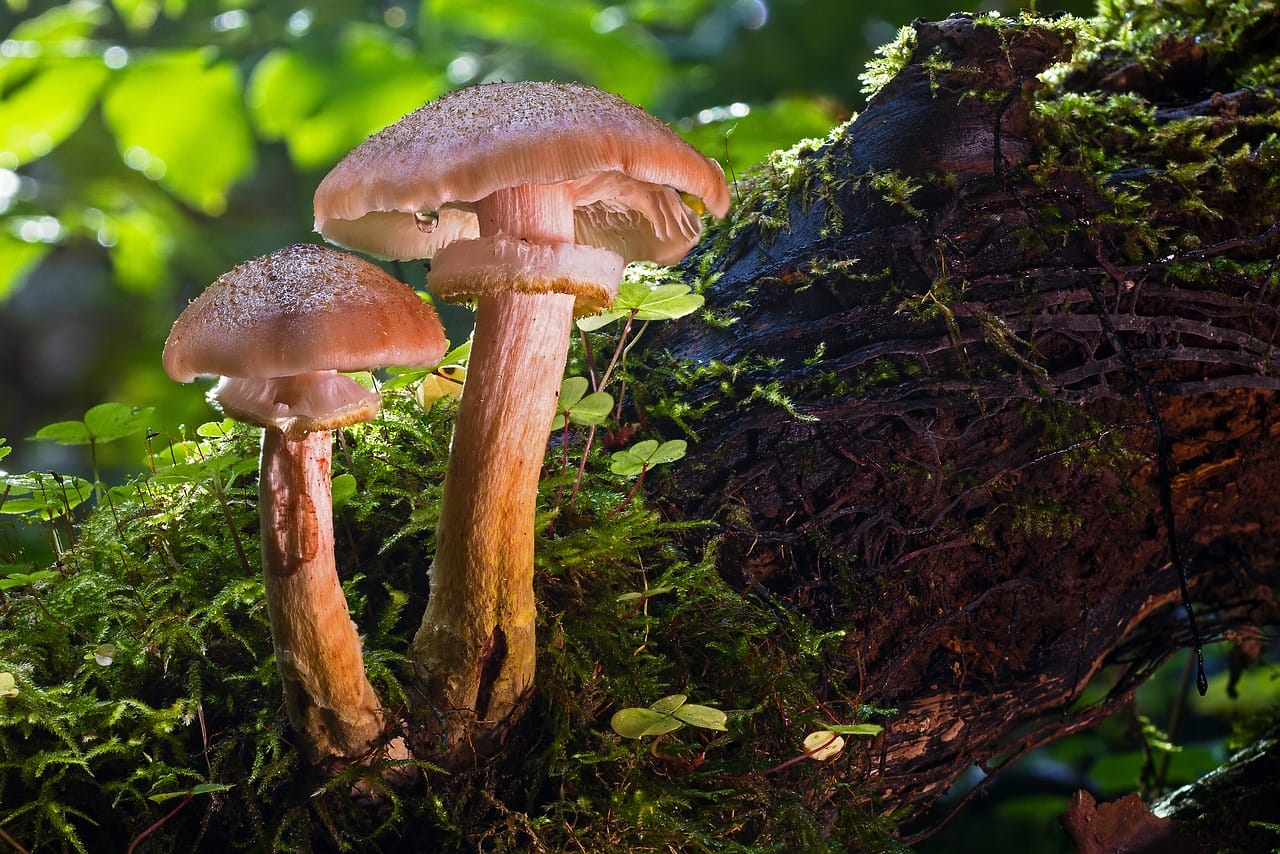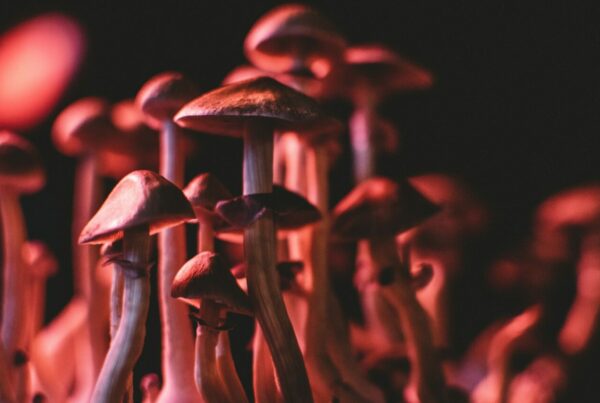Initially, many Canadians viewed magic mushrooms as a recreational psychedelic substance. However, upon closer examination of the active component psilocybin, scientists uncovered its powerful potential in addressing various mental health disorders.
As more information emerges, our understanding of psilocybin’s uses deepens. With increased awareness, it becomes easier for individuals to access these products through magic mushroom delivery services. A recent study shines a light on its role in human consciousness. Could this be the key to its profound effects on the human brain? Let’s delve into this fascinating exploration of magic mushroom products.
Key Takeaways:
- Psychedelic magic mushrooms have played a role in the cognitive functioning of early humans, aiding their survival.
- Mushrooms hold a significant position in neurological health due to their capacity to ease PTSD, depression, and anxiety.
- Psilocybin’s impact on consciousness and brain function may have boosted creativity, introspection and abstract thinking.

Historical Usage and Significance of Magic Mushrooms
Historical evidence indicates that our ancestors have tapped into the power of psychedelic magic mushrooms since ancient times. Indigenous people used them in sacred rituals and traditional ceremonies to honor their gods. They flourish worldwide, predominantly in subtropical and tropical regions, including South and Central America, the Caribbean, Southeast Asia, and Africa.
Shrooms’ Role in Ancient Civilizations
The Indigenous inhabitants of Mexico have relied on these fungi for spiritual insights, divine encounters, and religious ceremonies since ancient times. The Aztec Indians of South America referred to it as “God’s Flesh” and incorporated it into healing rituals.
Archaeological evidence points to usage dating back to:
- Approximately 10,000 years ago in Australia
- Nearly 7,000 years ago in North Africa
- Close to 6,000 years ago in Spain.
Some academics interpret these discoveries as evidence of the widespread historical usage of psilocybin. When people ingested mushrooms, they experienced a euphoric state, with their hallucinations often comprising complex geometric and visual designs.
Mushrooms’ Influence in Spain’s Bronze Age History
During the mid-1990s, archaeologists discovered remnants, especially hair strands from about 200 Bronze Age communities, hidden within a cave in Minorca, Spain. The artifacts were impressively preserved due to the cave’s sealed entrance caused by fallen rubble. Analysis revealed that these hair samples contained traces of three different alkaloids, substances recognized for their ability to alter human consciousness.
These discoveries provide intriguing information about the reasons and methods ancient societies used these substances. Surprisingly, reaching an elevated state was actually typical during those periods. However, the question persists, how did these substances influence human evolution?
Psilocybin and the “Big Bang Theory” of Human Consciousness Evolution
Recently, there has been a revival in psychedelic research, reinforcing the theory that psychedelics contributed to the evolution of consciousness. This idea, referred to as the stoned ape theory, was proposed by ethnobotanist Terence McKenna. The theory proposes that psychedelic consumption might have influenced the cognitive and cultural development of humans.
According to Dr. Thomas Falk, a Philosophy and Education professor at the University of Dayton, this theory could potentially account for the so-called “creative explosion” that happened among Homo sapiens about 40,000 years ago, signifying a major progression in early human cognitive abilities.
It’s theorized that psychedelics allowed early humans to explore self-created worlds. Gradually, their enhanced cognitive skills allowed them to replicate these experiences in their real-world environment.
Terence McKenna’s “Food of the Gods” outlines his arguments that the stoned ape theory has its roots in ancient shamanistic traditions and a speculated range of plants and fungi.
“Potential to Stimulate Neurological and Psychological Transformations”
Psychoactive substances possess the potential to instigate significant neurological and psychological alterations. These changes could have played a significant role in human evolution.
This study incorporates a multidisciplinary approach, combining biology, ethnobotany, and neuroscience to examine existing research on psilocybin and human consciousness. The theory presented suggests that early humans, due to their changing environment from forests to grasslands, encountered more animal dung, which increased their consumption of these fungi. The study references the “stoned ape” hypothesis, which proposes that this dietary change may have triggered major alterations in early hominid brains.
Potential Effects of Psychoactive Substance Use
The possible outcomes of consuming these fungi could include enhanced hunting and foraging skills, increased sexual desire, and heightened sensory perception. Coupled with psilocybin’s impact on consciousness and brain function, these factors might have encouraged creativity, self-reflection, and abstract thinking, which are fundamental for language development.
The Peruvian scientists conducting the study emphasize the need for more research into the effects of these substances on the brain and human evolution. While they have affected areas of the brain involved in memory, decision-making, and introspection, their evolutionary implications remain under active investigation.
An independent genetic study posits that magic mushrooms emerged around 67 million years ago. Human consumption of these fungi began millions of years ago, predating the use of marijuana.
What Are Dried Magic Mushrooms?
These mushrooms contain a hallucinogenic compound called psilocybin. The effects can vary depending on individual tolerance, body weight, and method of consumption. The following effects are typically expected:
- Profound joy
- Feeling of tranquility
- Spiritual insights and introspection
- A dreamy state of feeling disconnected from physical surroundings
- Changed visual perception, such as seeing glowing auras and vivid colors
- Enhanced sense of well-being
Despite being used recreationally, many individuals also use it for its medicinal benefits, particularly for its positive effects on brain health.
Effects on Neurological Health
The active ingredient alters mood, perception, and cognition by engaging with serotonin receptors in the prefrontal cortex. The resulting heightened cognitive abilities, including the manipulation of visual and auditory experiences, enhance the way one carries out tasks.
Connection to the Past
This principle can also be related to our early ancestors, specifically the so-called stoned apes. Their encounter and utilization of these fungi, particularly during their ecological transition from forest to grassland habitats, led to a higher exposure to animal feces, in turn increasing their intake of these mushrooms. As the “stoned ape” hypothesis, cited in the study, suggests, this dietary alteration could have instigated notable changes in the brain structures of early hominids.
The intake of psilocybin mushrooms may have influenced the evolution of their consciousness and cognitive abilities. This could provide an answer to where they attained key survival skills.
Present and Future Interactions
Latest studies reveal that individuals suffering from cluster headaches, anxiety, anorexia, obsessive-compulsive disorder, PTSD, and depression usually have low serotonin levels. Although selective serotonin reuptake inhibitors (SSRIs) are the common treatment, they often require a significant amount of time to exhibit improvement. However, shrooms can prompt immediate alterations in brain neuron connectivity.
Modern Psychedelic Research – Clinical Trials
Since the early 2000s, scientists have been exploring innovative treatments designed for individual patient requirements for various psychiatric and behavioural disorders.
Due to its ability to infiltrate the central nervous system and boost cognitive function, it has been deemed effective in therapy. Advances in research in 2020 suggest that psychedelic therapy using psilocybin products alleviates severe depression.
As expressed by Matthew Johnson, a professor at Johns Hopkins Medicine, these substances alter the way different brain systems interact. There is a noticeable increase in connectivity between brain regions that typically do not communicate effectively. Conversely, areas that usually interact considerably show decreased communication.
This induced chaos is not just a side effect but has potential therapeutic value. Depressed individuals often find themselves stuck in self-critical, repetitive thought cycles which worsen their condition. Psychedelics disrupt these patterns, making it easier for individuals to escape from their deeply rooted negativity during a psychedelic experience. This results in more flexible thinking and the ability to manage critical
Purchasing Magic Mushrooms Online: Your Route to Wellness
These regulated substances are widely available online. Choose from a selection that is not only safe but also lab-tested, reducing the chances of unintentionally buying harmful mushrooms. Reliable vendors ensure the quality and safety of the products they offer.
| Product | Psilocybin Content | Psilocin Content | Benefits |
| Enigma | 0.76% | 0.07% | Improves Focus, Offers Uplifting Effects |
| Atlantic Treasure Coast | 0.59% | 0.08% | Boosts Concentration, Sparks Creativity, Encourages Neuroplasticity |
| Blue Magnolia | 0.58% | 0.08% | Enhances Memory, Aids in Managing Depression and Anxiety |
| Cambodian | 0.45% | 0.06% | Useful in Handling PTSD and Anxiety, Supports Substance Abuse Recovery, Improves Mood |
Revealing the Hidden Potency of Magic Mushrooms
The progression we witness today, encompassing civilizations, urbanizations, and societies, are outcomes of various advancements. While the stoned-ape hypothesis remains a theoretical debate, scientific research is increasingly finding evidence supporting the influential role of psilocybin in human evolution.
If you’re in pursuit of enhanced cognitive growth, Magic Mushrooms Calgary Canada is your optimal destination for magic mushroom delivery. We offer a comprehensive range of superior-quality shrooms from A to Z, with fast delivery options available in British Columbia and other regions.
Discover the future of personal growth — check out our collection of top-tier psychedelics online Canada today.
Commonly Asked Questions
What types of shrooms did ancient civilizations consume?
Various kinds of fungi exist worldwide, so there isn’t one specific type consumed by all societies. Some favored the well-known liberty caps, while others gravitated towards Psilocybe cubensis. Most of these mushrooms were either consumed raw or used to prepare edible concoctions like tea blends.
What is the role of psychedelics in contemporary human development?
Psychedelics in our modern society primarily function by activating the 5-HT2A receptor subtype. This engagement has demonstrated efficacy in dealing with stress-related disorders while greatly affecting creativity and social interactions. These effects have the potential to enhance adaptability and survival, especially in societies that heavily rely on knowledge exchange and social interdependency.
Did spiritual rituals involving shrooms have a role in human evolution?
Indeed, shroom-centric spiritual rituals indeed influenced human evolution by molding cultural, religious, and societal frameworks. They foster a deep sense of unity, creativity, and community cohesion.
Articles You May Find Interesting:





